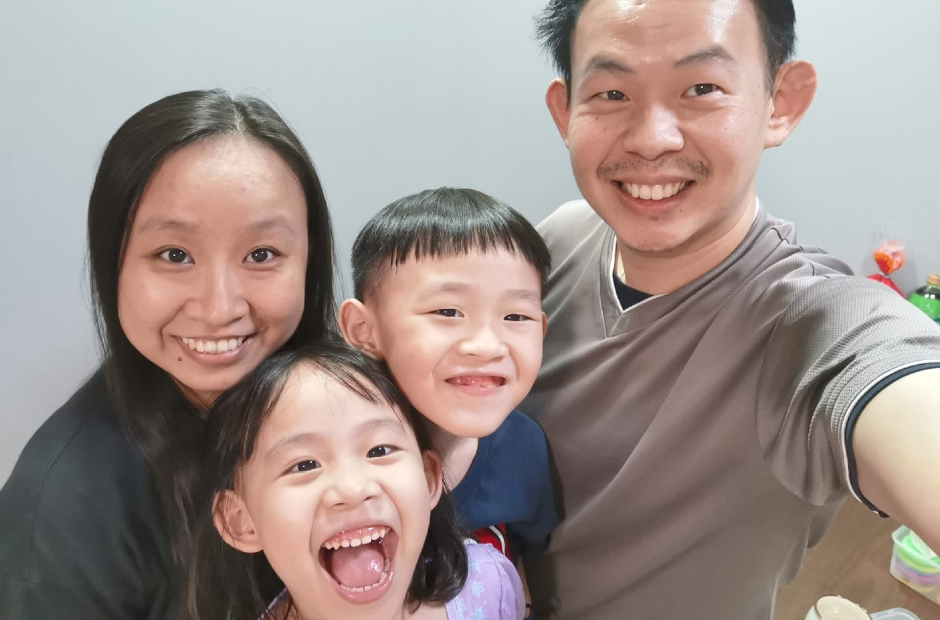It all began with some unusual behaviour: mood swings, unexplained nausea and complaints of stomach aches in the morning.
It was only after a particularly tearful episode that I realised that something was troubling my 10-year-old daughter. “My teacher doesn’t like me. I don’t want to go to school,” J told me after some prodding.
No matter how hard we try to sidestep them, conflicts, disagreements and other challenging social interactions are a fact of life. Some days, my daughter comes home from school feeling upset after a squabble or heated argument with a classmate (“Someone said my drawing is ugly!”). On other days, the conflict may seem more serious (“Jason pushed me and called me a loser!”).
Ms Celynn Chang, a manager at the Clinical Intervention Centre at Boys’ Town, is a senior counsellor who works with children. She tells me that children often find it difficult to navigate conflicts and challenging social situations because they do not have the tools to process intense emotions. A child needs to be able to regulate his or her emotions before they can think and act to address a problem, she explains.
As such, in the course of her work, she equips children with the necessary tools to manage challenging social situations. Learning how to handle and resolve conflict is a skill that every child needs for life, she emphasises. Not only does it foster positive relationships required for healthy development, it also helps build up a child’s resilience.
As children, they are routinely asked to bring problems up to their parents and teachers. But what if the child is facing a problem with a teacher? And what should a parent do in such instances?
Ms Chang shares that conflict with authority figures is not uncommon and can be difficult for children to resolve on their own.
“The approach in handling such a situation will depend on the developmental age of the child and the severity of the matter on hand,” she says.
For example, teenagers can be given the space to manage conflicts independently with guidance from parents. If the situation escalates, parents can step in to manage the conflict together with the teen. Primary school-aged children may require more hand-holding.
Refrain from jumping to conclusions
As a parent, it is easy to make hasty judgements when your child is involved. Depending on your personality, parenting approach and typical manner of handling conflict, it may be tempting to do one of these two things: Wave off your child’s complaints or immediately jump to their defence.
Neither option seemed ideal in J’s situation. With the first option, it would mean playing down my daughter’s emotional distress. Given her introverted personality and history of social anxiety, leaving the problem unaddressed would likely lead to bigger issues.
The second point of view inadvertently places the blame solely on her teacher. But is there always a “bad guy” and a “good guy” whenever conflict or disagreements arise?
Having conducted my fair share of interviews as a writer, I have realised that everyone has their own interpretation and perception of the truth. While there are exceptional cases where one party is clearly in the wrong, there are usually two sides to every story. So I went in with a cool head to understand the situation better.
Getting a clearer picture
After my child said that she was reprimanded harshly several times “for no reason” for homework matters, I fought the urge to send the teacher a message immediately.
Tamping down my own emotions (of irritation and frustration), I did some detective work by asking my daughter open-ended questions: When and where did the incidents happen? What homework and files was the teacher referring to? What did the teacher say, exactly? How did you respond to your teacher?
It gave me a clearer picture of the situation. Recounting the incidents also helped my daughter make sense of what happened in a calmer manner.
According to Ms Chang, getting as much input as possible from the child matters before reaching out to the teacher.
“While your child’s feedback about the teacher may appear legitimate, sometimes he or she may be struggling with the teacher’s teaching style, hence the conflict,” she says, adding that parents should be careful not to undermine the teacher’s authority, even if they have negative feelings about the situation.
Reaching out to find common ground
Despite suggesting ways on how to handle the matter, I was not able to help J get a handle on her anxiety and fears. The school refusal intensified, so I decided to reach out to the teacher.
It turned out to be a series of misunderstandings and miscommunication between the teacher and J, who had trouble keeping up with her school work after missing too many lessons when she was sick.
Meanwhile, the teacher had no idea that my quiet child was struggling and genuinely terrified of her. She sounded apologetic about the situation and thanked me for clearing the air.
On my part, I also apologised to the teacher for the inconvenience caused, and promised that I would work on helping my child improve her communication and time management skills.
For conflicts to become a learning opportunity, Ms Chang points out that it is important for adults to model what they want children to do in a difficult situation.
Instead of starting the conversation on a confrontational note, she advises parents to seek the teacher’s input and feedback on their child before expressing their concerns.
Ms Chang suggests, “Refrain from using ‘you’ statements (for example, ‘my child says you don’t like her’) as it will appear accusatory.” Maintaining regular contact with the teacher can also promote better understanding and communication.
If the teacher makes an extra effort with your child, remember to express your appreciation by dropping him or her a note, Ms Chang says. Engaging the principal as a third party to objectively assess the situation may be a last resort, if there is no improvement or response, she adds.
After our phone conversation, the teacher spoke with J the next day to clear up the misunderstanding and reassure her. I was deeply appreciative of the extra effort she had put in. Most of all, I was relieved that I had not been impulsive and taken sides.
My young daughter is still working on managing her emotions and learning ways to handle conflict. However, one important thing she has learnt from the incident is that talking it out solves problems while letting negative emotions fester will only hurt her.
Ways to help your child handle conflict
Ms Celynn Chang, a senior counsellor and manager at the Clinical Intervention Centre at Boys’ Town, shares tips on how to help your child become better at resolving conflicts:
1. Identify and tune into their emotions
Use a visual tool that shows a variety of facial expressions to depict different emotions. For example, a “feelings thermometer” can help the child identify the intensity of their emotions. If the emotions are in the “high temperature” zone, the child may need to calm down before taking action. Once a child learns to identify their emotions, teach ways to regulate them using methods such as taking deep breaths and counting to calm down.
2. Communicate effectively
Teach your child to use “I” statements instead of “you” statements. For example, say “I felt upset because my pencil was taken without permission” instead of “you took my pencil without asking me”. Prepare your child for potential conflict before it happens by role-playing various difficult conversations in a safe space.
3. Identify the source of the problem
Children may need help to figure out what is troubling them and why they are caught up in a disagreement. Discuss with your child scenarios in which conflict may happen while interacting with their friends, teachers or even siblings. Identifying the root of a conflict makes it easier to resolve.
4. Develop problem-solving skills
Brainstorm several possible solutions to resolve the issue. Before settling on the best solution, discuss the feasibility, pros and cons of each solution and consider the possible outcomes for each idea.



.jpg)


